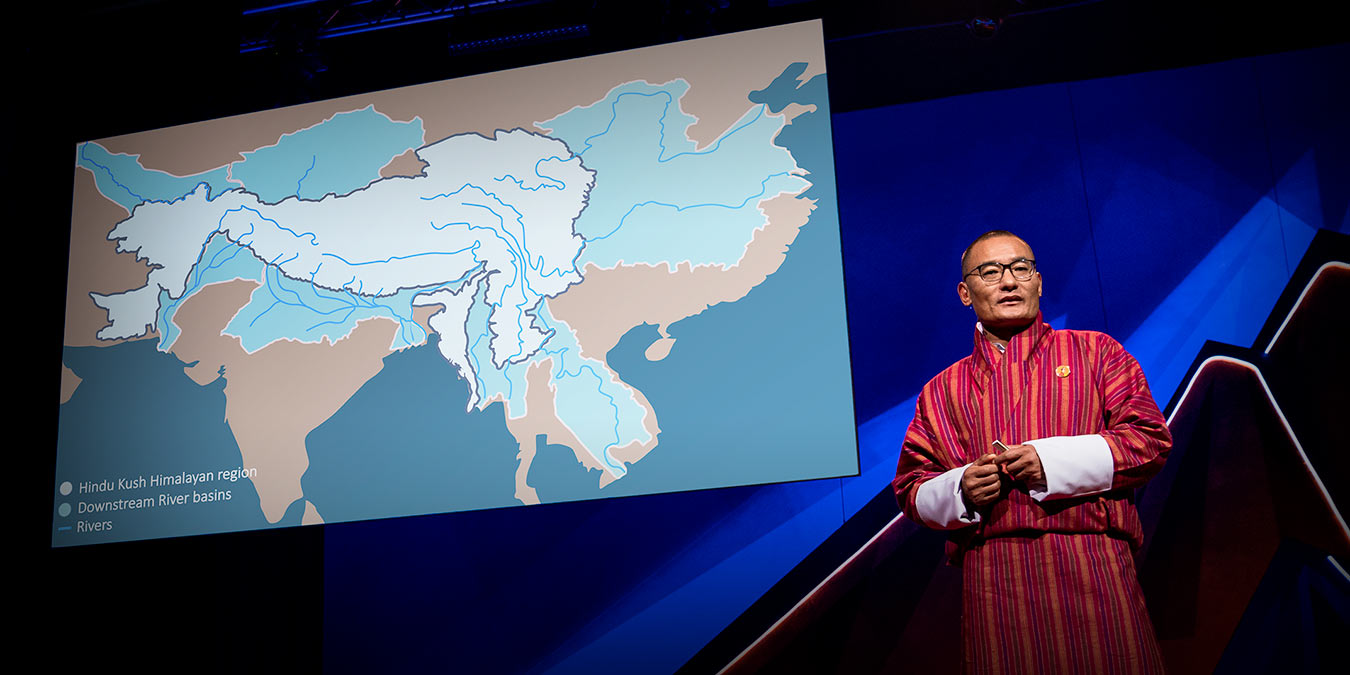Ted Talk - An urgent call to protect the world's 'Third Pole'

Contributed
Diane Gates
Tshering Tobgay, from Bhutan (July 2019)
The Hindu Kush Himalaya region is the world's third-largest repository of ice, after the North and South poles - and if current melting rates continue, two-thirds of its glaciers could be gone by the end of this century. What will happen if we let them melt away?
Environmentalist and former Prime Minister of Bhutan, Tshering Tobgay, shares the latest from the "water towers of Asia," making an urgent call to create an intergovernmental agency to protect the glaciers -- and save the nearly two billion people downstream from catastrophic flooding that would destroy land and livelihoods.
In this area, the glaciers are now melting much more quickly -- so quickly, in fact, that at just 1.5 degrees centigrade of global warming, one-third of the glaciers would melt.
At two degrees centigrade of global warming, half the glaciers would disappear. And if current trends were to continue, a full two-thirds of our glaciers would vanish. Pollution in the region has increased the amount of black carbon that's deposited on our glaciers. Black carbon is like soot. Black carbon absorbs heat and just accelerates the melting of glaciers.
But what does this mean?
It means that the 240 million people who live in the Hindu Kush Himalaya region -- in Afghanistan, Pakistan, India, China, Nepal, Bangladesh, Myanmar and my own beloved country, Bhutan -- these people will be directly affected.
When glaciers melt, when there's more rain and less snow, there will be huge changes in the way water behaves.
There will be more extremes: more intense rain, more flash floods, more landslides, more glacial lake outburst floods.
All this will cause unimaginable destruction in a region that already has some of the poorest people on earth.
But it's not just the people in the immediate region who'll be affected. People living downstream will also be hit hard.
That's because 10 of their major rivers originate in the Hindu Kush Himalaya mountains.
These rivers provide critical water for agriculture and drinking water to more than 1.6 billion people living downstream.
That's one in five humans. That's why the Hindu Kush Himalaya mountains are also called the "water towers of Asia."
But when glaciers melt, when monsoons turn severe, those rivers will obviously flood, so there will be deluges when water is not required and droughts will be very common, when water is desperately required.
In short, Asia's water tower will be broken, and that will be disastrous for one-fifth of humanity.
I am involved with the senior’s fellowship group known as U3A (Stands for University of the 3rd Age) where we have over 24 special interest groups established to cater for our many Whakatāne members.
One of the special interest groups features Ted Talks. Twice a month, we show three of four talks, depending on their length, and, then we have an interesting discussion about the subject featured.